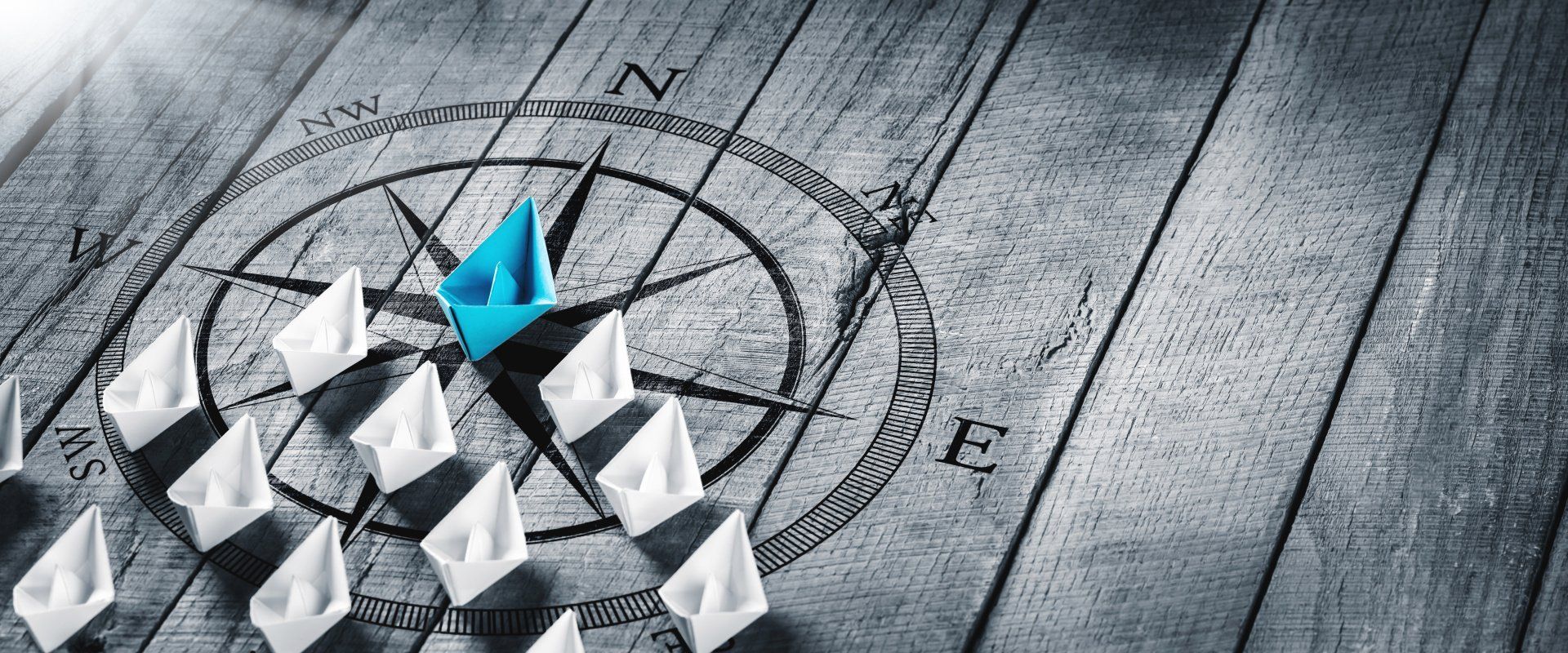BLOG

By Wendy Wilson
•
28 Dec, 2020
Growing the Human Operating System By: Wendy Wilson “When we experience the world as “too complex” we are not just experiencing the complexity of the world. We are experiencing a mismatch between the world’s complexity and our own at this moment. There are only two logical ways to mend this mismatch – reduce the world’s complexity or increase our own.” - Robert Kegan & Lisa Lahey So, there is really only one solution; to increase our own complexity. And as the world’s complexity is accelerating, we need greater complexity of mind - just to keep up . I ncreasing our complexity like growing our human operating system. It expands how we think and make sense of the world, sometimes referred to as vertical development, in contrast to horizontal development or the process of gaining additional knowledge and skills. Growing our human operating system is more critical than ever to help leaders make decisions and lead effectively. It help us: See new things that we couldn’t see before. Increase our capacity to hold different, sometimes opposing, perspectives. Increase the sophistication of our interactions with others. And improve our effectiveness in complex contexts. What the Heck is Water? You may have heard The Two Fish Story: Two fish pass each other one morning. One nods to the other and says, ‘good morning, how’s the water?’ The other fish nods and swims away thinking, ‘what the heck is water?’ We all have lenses through which we view the world and things we can’t ‘see’ about ourselves and our impact. When we are able to see new things, we expand and it shift s how we show up. This is called the subject-to-object shift. When something you used to be subject to (i.e., you’re swimming in water) is now the object of your attention (i.e., you can now ‘see’ the water). According to a Duke University study, over 45% of all our daily behaviours are automatic; they are done out of habit with no conscious thought. Our habits are typically from the past, based on old beliefs that were once helpful, and now get in the way of our effectiveness. Times change, the demands on our leadership grow and something new is required of us. At some level we know it’s time to step up our game to a more expansive way of knowing and interacting in the world. What Can’t You See? Paradoxically, the things that made us successful and helped us get to this point in our life, may be the very things we need to see and change. Habits and tendencies such as being controlling, aggressive, striving for perfection, people-pleasing, always having the solution, protecting ourselves, being cautious – and many others - may no longer serve us. These habits and tendencies have gifts in them, but they don’t scale as leadership demands increase. When I was an Operations Manager at Bell Canada many years ago, I was given a special project with high visibility across a number of departments, and that's when I became acutely aware of my perfectionist tendencies. I had a certain way I wanted the project to be approached. I created all the reports and supporting documents myself, despite having two other people on the project with me. I worked long hours trying to figure out the best solution, primarily by myself. I justified this approach by telling myself I was the manager, my name was ultimately on the project, and a lot was riding on the outcome. One morning I was in the office alone, feeling completely overwhelmed and overworked, and I knew there had to be a better way. As our leadership and context scales, o ur limiting h abits and tendencies start to cause personal pain and impact those around us. It can leave us feeling overwhelmed, exhausted, stuck or unable to fully make our desired impact. In my case, all of the above! If this is resonating for you, a good place to start is to notice the behaviours, habits or beliefs that are getting in your way. (Note that you will probably start justifying your behaviour - that's a normal part of the process). It may help to ask for feedback from someone you trust or to engage in a 360-feedback process (i.e. the Leadership Circle Profile is a great assessment tool to uncover reactive and creative tendencies). Seeing and naming your current beliefs and tendencies helps you tap into your current operating system to see how you’re programmed. The goal is not to get rid of your old habits – it is to transcend and include the gifts of your old habits . To find a more relaxed and expanded way to be with more complexity.

By Wendy Wilson
•
01 Dec, 2020
Six Strategies for Leading in Complex Times By: Wendy Wilson As our business contexts become more complex, common leadership approaches that once worked well and helped us achieve our desired results may fail us. Our traditional approaches to leadership need to evolve to keep up with our VUCA (Volatile, Uncertain, Complex and Ambiguous) environment. VUCA, an acronym first used over 20 years ago, has roots in the military, education and strategic leadership - and it increasingly reflects our current business environment. Essentially, if our leadership capability is not keeping pace with the changing complexity of our environment, it is falling behind. Being able to identify complexity, getting comfortable with it, and learning some strategies to effectively lead in complex contexts is essential for leaders today. Complex vs. Complicated Leaders need to understand the context in which they are operating to respond effectively and make appropriate decisions, including the difference between complicated and complex domains. Complexity is increasing prevalent in the business world, and yet the complicated domain is where many leaders grew up and learned their current leadership approaches. According to the cynefin framework by Snowden and Boone, complicated contexts are like building a rocket ship. There is at least one way to do it, and probably many ways. There’s a clear relationship between cause and effect and many known variables. The process may require great expertise, investigating several options and complicated analysis. Leaders have to sense, analyze and respond. Complex contexts are like transforming a culture. There is no right answer. You may find some helpful patterns if you conduct safe to fail experiments, but you are in the realm of unknown variables. Leaders in this context allow the way forward to reveal itself. They have to probe first, then sense, and then respond. 6 Strategies for Leading in Complexity Complex domains require different approaches to leadership. Below are six strategies for leading in complexity, originating from some of the experts in the field – Bob Johansen, Jennifer Garvey-Berger and David B. Peterson. Embrace Complexity. The challenge is to get comfortable being uncomfortable and embrace complexity and paradox. You want to adapt to constant disruption and build your muscle for taking the unexpected in stride. A leader’s real work is in the complex domain, that’s where they are needed most. It may be time to delegate the complicated, so you can lean into the complex. Hold an Experimental Mindset. Experimenting will serve you in complexity, where there are no right answers. Experimenting with different approaches and watching for patterns to emerge can help determine solutions and a path forward. If you try to overcontrol people and processes, you may miss opportunities for innovation and new business. Zoom In/ Zoom Out. Stepping back to explore the big picture from a systemic perspective is key. Examining pros and cons and predicting consequences now and at various points in the future, i s key . Explore your options from many angles and get a view to the direction in which things are moving. Solicit Divergent Perspectives . Ask for input from a cross-section of people that will likely have differing insights and opinions. More than ever leaders need a multitude of perspectives to consider. Be Decisive - and ready to adapt. Be decisive about the direction you’re heading in - and flexible on the specifics of getting there. B eing ready to adapt as things change is essential in complex contexts. Offer realistic hope. Leaders need to emit and sustain positive energy and resilience under pressure. Connecting with their team and acknowledging their emotions and challenges is essential. When they can do that, they can offer hope to others, which is key in a VUCA world. Bob Johansen in The New Leadership Literacies offers, “The future will reward clarity, but it will punish certainty. So, leaders need to be extremely clear. They need to develop their own clarity and their own ability to express that clarity in a compelling way. But they also need to moderate their certainty.” Leaders need to build their muscle and comfort leading in greater complexity. They must understand the context they’re working in and adapt their leadership approach appropriately, offering realistic hope to those they lead along the way.

By Wendy Wilson
•
27 Oct, 2020
New Habits for the Ultra-Pentathlon By: Wendy Wilson A pentathlon is an Olympic sport that features five different events, requiring a range of skills, endurance and resilience. David P. Peterson, Director at Google, referred to the pandemic as an ultra-pentathlon, and it certainly resonates. At first, we thought the pandemic would last until spring. Then the fall. Now, we’re over 7 months in. The realization that the pandemic is not a sprint, but an ultra-pentathlon, is sinking in. We are accepting that we don’t know how long it will last - and that some things will actually never go back to the way they were. We are shifting from reacting and waiting to get back to normal to responding thoughtfully and creatively to the future that’s unfolding. It's a shift from surviving to thriving. And we are all in different phases of this shift. To make the shift to thriving, it's a good time to check in on the habits that are supporting us – or not. Habits are important because they force us to look at where our edges are . At best they make up the regular choices we make that are aligned with what's important to us. At worst, they are the ultimate form of self-sabotage. Start by taking stock; how are your current habits working for you? Take a moment to reflect on your current habits - which may be quite different now than pre-pandemic. Are they supporting what's important in your work and personal life? Your sustainable well-being? Or would you benefit from a change? Next, think of one habit that would make a big difference. What is one habit that will influence everything? And it's worth noting that small changes can make a big difference over time. You've probably heard the analogy that a 1% change in a ship's direction can change the country in which it lands. So consider starting with one small change - to build your success and your confidence. So, what could you start today, so that 3 years from now you can say, 'that was the best thing that ever happened to me.' Maybe you want to start a practice of daily writing, carve out time for planning & reflection, or begin 15-minutes of daily exercise. Maybe you want to connect with each person on your team once a week, without fail. Or maybe you want to finish work by a certain time each day, creating time to read, take a walk or connect with others to recharge and fill your tank for the days and weeks ahead. One of my clients is feeling burnt out with work and family responsibilities. He's recently committed to taking regular long weekends and half an hour each day for walking and reflecting, to support a much-needed mental break, his sustainable well-being and creativity. Another client is committed to a new morning routine to help her enter the day more gently, instead of heading straight to her computer. It replace the transition she used to have in her morning commute - minus the traffic. Keep you new habit top of mind and be consistent. Consistency is key for sustaining new habits. Here are some ideas that may work for you: Try s cheduling your new habit it in your calendar or adding it to your daily to do list - these are game-changer s . You can also try doing your new habit at the same time every day, or schedule an alarm as a remind er. Capturing your new habit on a post-it note and placing it where you'll see it regularly may work . Finally, a n accountability buddy m ay make a difference in holding you accountable. Intentional new habits are important to both our well-being and creating what's important in our life - especially in this ultra-pentathlon.

By Wendy Wilson
•
24 Mar, 2020
Leading in Challenging Times By: Wendy Wilson The rapid rate of change in the past few weeks feels unprecedented. New challenges show up everyday, bringing many emotions in tow, as people are impacted in a variety of ways. As leaders we can feel ill-equipped to provide support, connection and productivity as we try to structure a way forward in uncertainty. Lately, I’ve been asked a number of questions and I’ve been considering my own leadership and ability to respond effectively. Below are a few thoughts and reminders as we lead through the uncertainty that I hope are helpful: Leading Ourselves Check in with yourself. Check in with yourself frequently and ask, “What is my inner state of being?" Notice if you're feeling grounded, productive, connected, anxious, disengaged, fearful, etc. Good follow-up questions include, “What is the impact on myself and others?" and “What is my desired impact?" If you’re feeling fear and anxiety, know that it’s normal during turbulent times. Consider how you might best address it, and if it’s acute or you’re feeling stuck, reach out for some support. Fear and anxiety can make us contract and limit our ability to see options and possibilities. Practice self-care. Staying healthy and grounded is critical and enables us to be there for others. During challenging times we tend to let go of the very things that sustain us most - eating well, exercise, mediation, rest - and yes, coaching. What do you need in your regular practice to be your best during this time? Embrace your growth. In difficult times, we often accelerate our growth and learning. We try new things, we stretch ourselves, we overcome personal limitations and obstacles. Ask yourself, “What is being asked of me? What is my growth edge here?” Leading Others Connect. Take the time to connect and S L O W down in order to move faster. It feels counter intuitive, but connecting with others is critical and supports the notion that we are all in this together. Create opportunities to check in with people, really listen and acknowledge what they are feeling. Provide compassion, encouragement and support. You could start with, “How are you feeling about working from home? How is your family? What is your biggest challenge?” In a time of physical distancing we can still spread connection and compassion. Return to your purpose, vision and values . Returning to our vision and outcomes when we’re feeling uncertain can help ground us in what we’re really up to and how to best move forward. Look for new ways and perspectives . Instead of just cancelling and postponing start asking, “How else can we create that outcome?" Hold a growth mindset. Communicate. Communicate honestly and transparently. Share the facts and what you know, as well as what you don’t know, and keep people up to date. It will not alleviate all their fears, but it can create more trust and a sense of team. Hold virtual team meetings - they are more important than ever. And lean into your team to help come up with solutions and strategies. Stay safe and healthy. Wendy
CONTACT US
905-330-6567
JOIN THE COMMUNITY & STAY IN TOUCH
Thank you for contacting us.
We will get back to you as soon as possible
We will get back to you as soon as possible
Oops, there was an error sending your message.
Please try again later
Please try again later
